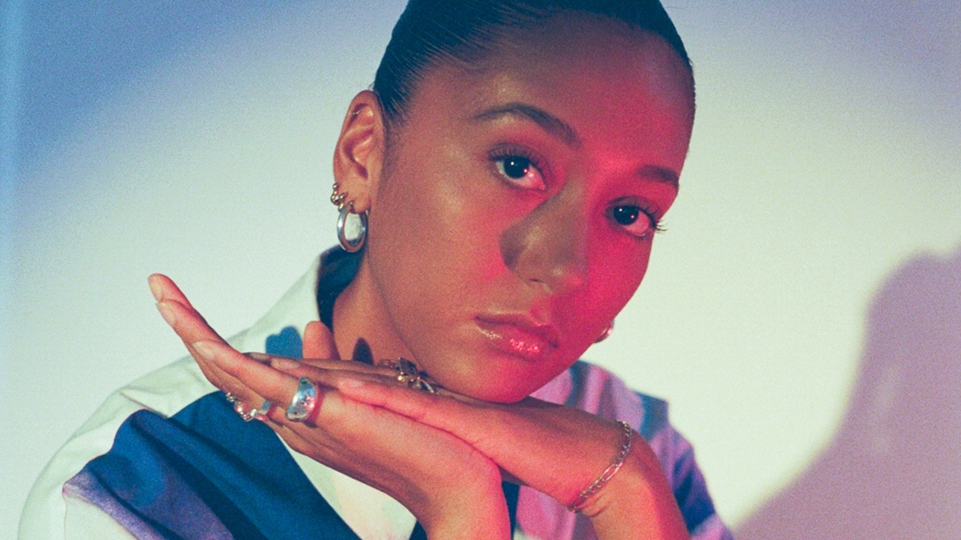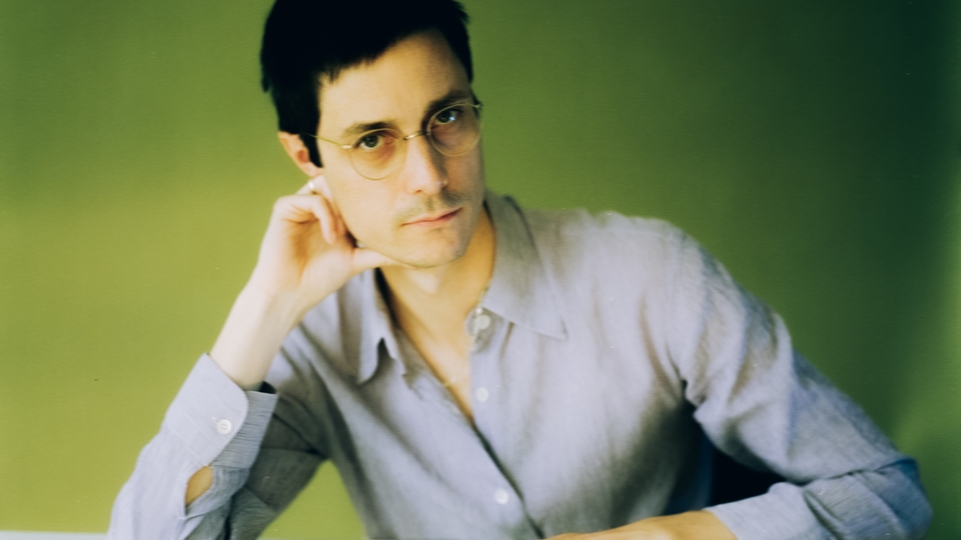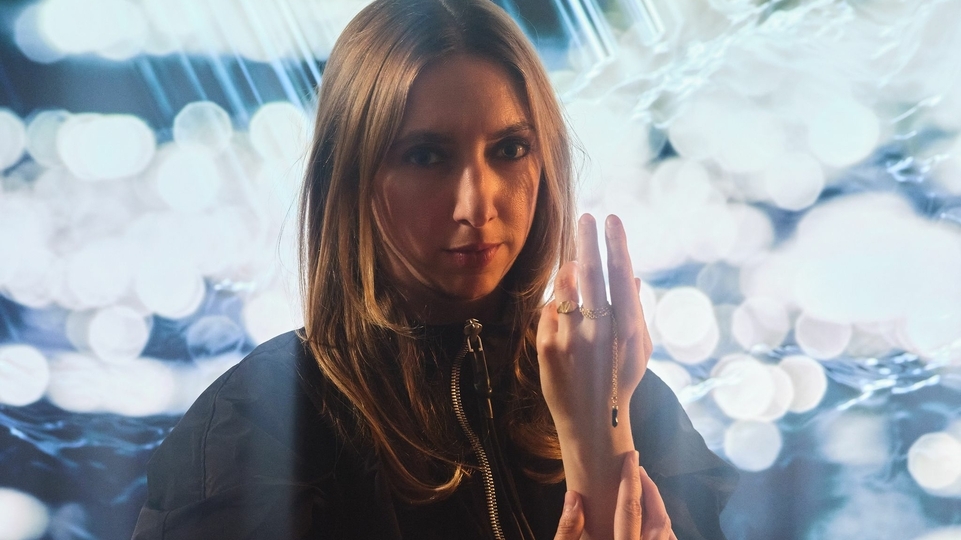
Call Super: human nature
As Call Super, the London-born artist Joseph Richmond Seaton has established themself as one of the most consistently thrilling DJs on the underground circuit, using house and techno as a springboard to explore all manner of moods and sounds. As a producer, their albums for fabric's Houndstooth label and Incienso have explored more abstract terrain, and their upcoming fourth LP, 'Eulo Cramps', goes further still. Among the trees in London's Hampstead Heath, they meet Eoin Murray to discuss the journey of introspection that led to its creation, leaving things open to interpretation, and the multitude of selves within us all
There are 8.4 million trees in London. That’s almost one for each of the city’s 8.8 million inhabitants — enough that, by UN standards, it could technically be classified as a forest. Home to thousands of these is Hampstead Heath, a vast and storied green space in the North-West, where beech, birch and wild service trees grow alongside veteran oaks, some over 500 years old. Strolling through it one Thursday afternoon in August with Joseph Richmond Seaton, the musician and DJ best known as Call Super, conversation inevitably takes an arboreal turn.
“Trees are overwhelming,” they say, as we peer out toward The Grove in nearby Highgate, where stars like Kate Moss, Sting and George Michael once lived. They point to a horse chestnut — their favourite. “I look at trees, particularly ones like that, and I feel multiple resonances clawing at me, vibrating inside. There's so much in the actual physical shape of a tree, from the roots to the way their branches mirror our lungs... It’s a kind of mirror for life in all its forms.”
Trees have played an important role in Seaton’s life since they were a child. They grew up not far from here on the Archway Road, in a terraced house that their parents, both artists, rented cheaply through the Acme tenancy organisation; together with others living on their row, they managed to defeat a government plan to demolish the buildings and purchase their home for a fraction of the average cost by claiming a form of squatters’ rights. Pollution on the road, a busy offshoot of the A1 motorway, led to Seaton developing chronic asthma, resulting in an early life marked by long spells in hospital. Time spent in the countryside, among the trees of North Yorkshire where their grandmother lived, offered respite from their breathing difficulties.
They devoured English myths and legends where trees featured prominently, and learned how Robin Hood’s bows and arrows were cut from ash due to their straight grain. They longed for a treehouse, a nook of their own where they could let their mind wander. They heard of how, on the American West Coast, groups of people once made their homes in the huge, protruding roots of sequoias and redwoods. “That was stuff that I was obsessed with as a kid, and which never really left,” they say. “It leaves you with this thing that you come back to over and over again in your head: the metaphor of the tree as a part of you, of wisdom and breath, and breath being the thing that sustains life. That was just something I felt quite deeply at quite a young age.”
Trees are among a variety of images — along with blood, light and death — that recur in Call Super’s new album, ‘Eulo Cramps’, which arrives next month via can you feel the sun, the label they co-run with their friend and fellow DJ/producer, Parris. Arriving at the end of a busy summer spent playing high-energy DJ sets at clubs and festivals including Glastonbury, Sónar Barcelona, Love International, Dekmantel Selectors and Ibiza’s DC-10, their fourth LP forms part of a larger, more introspective body of work titled Tell Me I Didn’t Choose This. Incorporating a selection of their paintings, poems and auto-biographical writings relating to significant, and at times traumatic, periods in their personal development, they plan to exhibit the project on the walls of a church later this year.
Where Seaton’s solo EPs, remixes (for artists including Larry Heard and Portable), and collaborative cuts with Parris and Beatrice Dillon (such as the landmark ‘Inkjet’ / ‘Fluo’ on Hessle Audio) have approached house and techno with an elaborate, painterly touch, their longform works have explored increasingly abstract territory. ‘Eulo Cramps’ expands on this shapeshifting sound, developed across three previous albums released via fabric’s Houndstooth label and New York’s Incienso. Throughout its nine tracks, Seaton weaves colourful strands of free jazz, avant-garde pop and salsa around slippery electronic beats, spoken word and, for the first time, guest vocalists.
Produced during a time of self-reflection, the album is also an expression of Seaton’s belief that, within us all, there are multitudes. In it, we don’t just hear the culmination of a decade’s worth of musical evolution, we find someone arriving at a point of clarity in how they see themself in the world — an ever-changing amalgam of the person they are today, the people they have and have not been, and those they are yet to become.
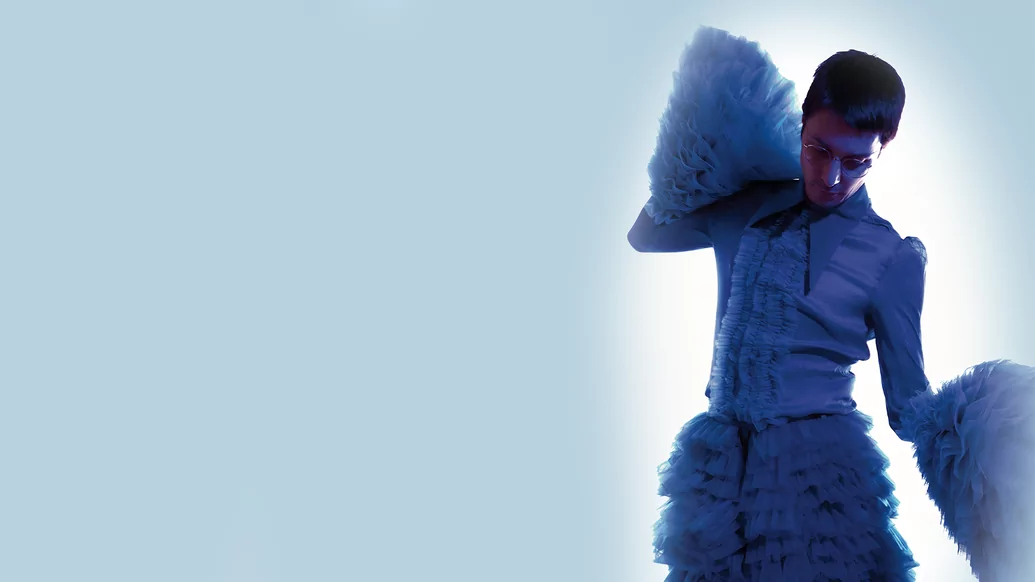
In the same way that a tree is nourished by its many roots, stretching out in all directions in search of nutrients and water, Seaton understands life in terms of its twists and turns – a tangled network of experiences, memories and possibilities that makes us who we are. Who we are, exactly, is multifarious, they say. The versions of ourselves that we show to the world will change often, depending on who we’re with, what we’re doing, and where we’re at in life. Some of these people within us may remain dormant or concealed, their lives unlived due to the paths we take, the decisions we make, or the things that happen to us, but they rarely disappear entirely. As Seaton puts it in the accompanying text for Tell Me I Didn’t Choose This, “At times these alternate lives remind us of who we were. At other times they illuminate the future.”
“I always reacted very negatively when I would hear someone say something like: ‘On my journey, I have found the person I truly am’,” they tell us. “The caveat needs to be that you mean ‘right now’. You may not be that person in 10 years. You may not want to be that person in 10 years. You don't know what's going to happen to you next.”
Today, Seaton is cordial, an embodiment of charm framed in a long black coat and a pair of dark Eckhaus Latta tie-dye jeans. With a round wicker bag slung over their shoulder, they lead us along the Heath’s winding paths, recounting stories of formative nights they spent here as a teenager in the early 2000s: getting drunk with friends, trying acid and ecstasy for the first time, and dancing to mixtapes they got from a mate’s rave-going older brother; The Prodigy’s ‘The Dirtchamber Sessions Volume One’, Carl Cox’s F.A.C.T. mixes, and the ‘Reactivate’ compilation series — in particular ‘Reactivate 9 (RazorSharp Beats+Bytes)’ — all featured heavily.
Seaton’s immersion in dance music continued in subsequent years, as they ventured to club nights like Trade at Turnmills and DTPM at The End, a venue that, more than any other, shaped their relationship with the art of DJing. In a recent interview with Tim Sweeney for Beats In Space on Apple Music, they spoke about how it was there, dancing to regular all-night sets from Laurent Garnier and Jeff Mills, that they came to understand house and techno as the “glue” with which you could connect all manner of sounds. It taught them that the myriad styles of music they loved didn’t need to be pigeonholed, and that a good DJ, using the sounds of Chicago and Detroit as their foundation, could play whatever they wanted. Having begun learning to mix on a pair of belt-drive turntables at the age of 15, this idea fed into their own technique as it developed. It’s a guiding principle that has made them one of the most consistently thrilling DJs on the circuit today.
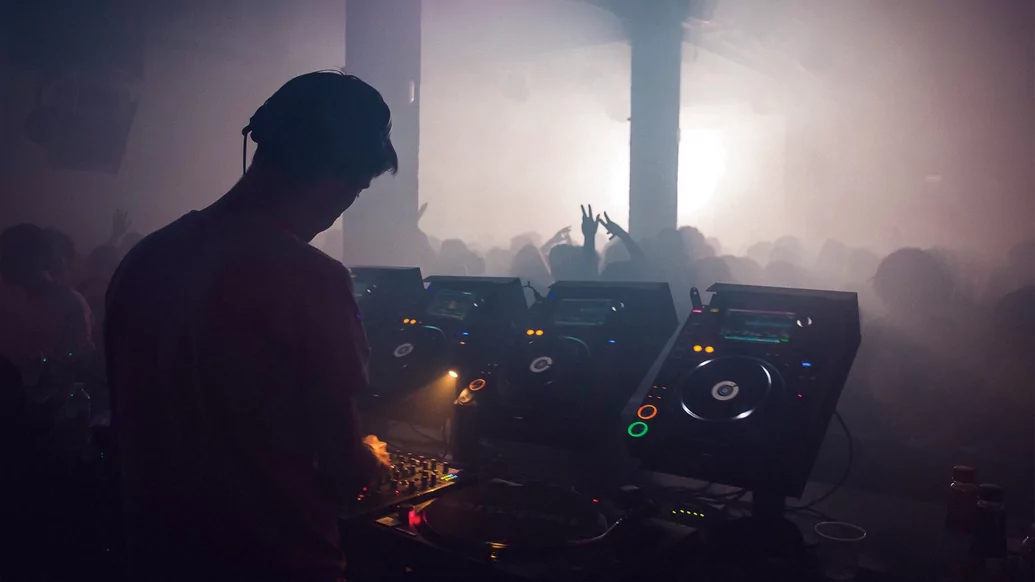
Take their closing set from the Saturday night of Dekmantel 2022, which you can listen back to online. They conjure pure euphoria, mixing thumping dance cuts by the likes Carl Craig, Pearson Sound, Anthony Naples, Slider, Shanti Celeste and Kenny Larkin with irresistibly silly edits of Cardi B and Kelis, before ending on Bronski Beat’s ‘Smalltown Boy’ and the timeless reggae of John Holt’s ‘For The Love Of You’. They pull all this off with an almost jaw-dropping fluidity and dexterity, in a way that makes tracks feel like they were made for one another.
Elsewhere, you’ll find them focused on a particular mood, mixing records old and new, beloved and obscure to reach the vibe they’re trying to capture. Their 2017 ‘fabric 92’ mix is a stunning presentation of late-night/early morning dancefloors; a recent mix for Taipei collective Pure G is a deep dive into peak-time rave hypnotism and heads-down rolling techno with a Cocteau Twins climax. Their solo NTS shows for can you feel the sun step out of the club and into serenely ambient and avant-garde headspaces, where tracks are interspersed with recitals of poems of their own and by others.
Tapping into the energy of the room they’re playing in, and guiding it somewhere new, is a skill Seaton has mastered over the years; the route they’ll take to hit that point is unpredictable, but they know it instinctively. As they put it in an Instagram post promoting their residency at London’s Phonox club earlier this year: “Sometimes I arrive, 15, 20, maybe 30 minutes into a set and I realise which one of me is engaged.”
They cut their teeth as a DJ in London, hopping on the decks at the cocktail bar they worked at after finishing shifts. They put on their first night at the age of 18 in Brick Lane’s Cafe 1001. They moved to Berlin after finishing uni in 2009, a couple of months behind their close friend TJ Hertz, aka Objekt. The pair have gone on to play semi-regular, much-hyped and deliriously fun b2bs at their own parties, as well as the occasional festival.
They worked part time at a call centre, and got by playing a couple of bar gigs a month for €150 a pop. Before they knew it, in 2013, their debut EP for Houndstooth, ‘The Present Tense’, was released to headsy acclaim. They took up a residency at the experimental electronic label PAN’s events, playing in between live sets, and went to New York to play at its PAN_ACT festival that summer. They ended up staying for six months, taking sets here and there and working on the music that would become their debut album. Not long before this, they’d been ready to give up on music and return to London to settle into a more steady job, but now things were starting to happen. They shut one door, leaving one potential life behind, and ran headfirst toward another.
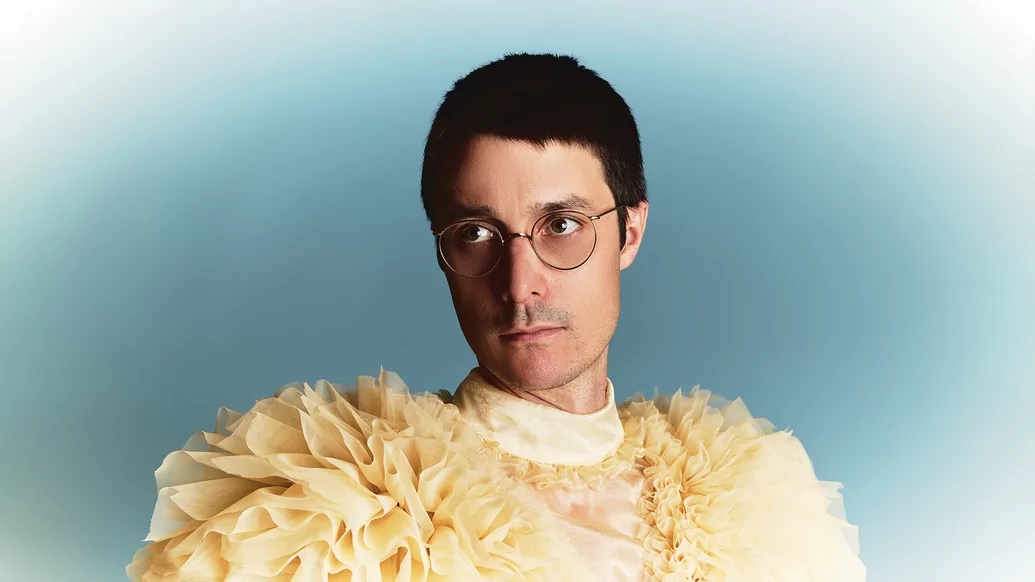
“I don't think it helps anyone to have things spelled out to you. It's an imagination stifler. I love it when you talk to someone, and you get a totally different interpretation of things. That's the point of making stuff and engaging with it – it's for you to have your own thoughts about.”
When Seaton talks about making music — at times softly, at others animated, but always authoritative and self-assured — they do so with the eloquence and consideration of someone who spends a lot of time thinking about the artistic implications of their craft. Yet they also maintain the amiability of someone who appreciates the value of curiosity, of letting ideas flow naturally and, above all, producing something they’d actually want to hear. At times, they defer to the second person, as though one self is answering for another.
“You have this back and forth between the internal stuff that you're trying to resolve and explore and come to terms with, and the external stuff, which is just about music being something that makes life richer, which gives you beauty and stuff to think about,” they say. “You're thinking about things you've gone through and how you want to express those. In that expression, which is obviously a form of therapy, you’re translating them. How do you present this? How do you make this into something that adheres to musical logic, and becomes the listen you want this record to be?”
These questions have come up in Seaton’s music since day one. Listening back to the “terrible” earliest tracks they made on borrowed equipment as a teen, they can still hear their eagerness to tap into something deeper, which didn’t adhere exclusively to the confines of music for the club. “I can hear in those records an amalgamation of a lot of things in my head at that time in my life,” they say. “Those things are still in my head, but I think, as I've gotten older, I’ve found ways to get those ideas out and make them sound the way I want them to sound, not just technically, but also the more theoretical stuff that I was really being inspired by as a kid.”
This came to fruition in 2014 with the release of Call Super’s critically lauded debut LP, ‘Suzi Ecto’, via Houndstooth. Their previous work for the label had evoked a stormy club sound at the intersection of Terrence Dixon-esque Detroit techno and German labels like Kompakt and Perlon, but the 11 tracks on ‘Suzi Ecto’ showcased the producer’s alchemical ability to bring elements of jazz, ambient house and Warp-like experimentation into the mix.
The album was, in part, a meditation on death, a topic Seaton has fixated on since childhood. Suzi Ecto, the story goes, was the name they came up with for a nurse who, as they lay in a hospital bed on life support in the middle of an especially bad asthmatic episode, told their mother they would not survive the night. The album’s opening track, ‘Snipe’, is a tribute to one of their closest friends, who died during its creation, and whose voice is heard faintly amongst the crackling distortion and wavering, uneasy keys. “There are lots of experiences we'll share with some people, but there aren't that many experiences we share with every single human on the planet,” they say. “Death is obviously one of them, so we should probably be a little more okay with thinking about it and talking about it than we are. I’ve always felt like being a bit morbid wasn't a terrible thing, that it brought life into focus more.”
Picking up on this stuff isn’t essential to enjoying a Call Super record; they aren’t interested in releasing “statementy” music. Ideas are expressed obliquely, with certain windows left open for listeners to consider and find their own interpretations in. “I don't think it helps anyone to have things spelled out to you,” they explain. “It's an imagination stifler. I love it when you talk to someone, and you get a totally different interpretation of things. That's the point of making stuff and engaging with it – it's for you to have your own thoughts about.”
Seaton has, from time to time, used characters as a way of exploring wider concepts. Along with the nurse Suzi Ecto, they’ve released numerous EPs under the aliases Ondo Fudd and Elmo Crumb on The Trilogy Tapes label, encompassing full-bodied deep house (‘I Man A Canary Bird’), crunchy techno (‘There Will Be A Time’), acid-dipped electro (‘Harbour’) and Harold Budd-invoking ambient (‘Blue Dot’). They now recognise these monikers as early iterations of their fascination with “the multiplicities within”.
Album tracks with titles like ‘I Look Like I Look In A Tinfoil Mirror’ from 2017’s ‘Arpo’ — which DJ Mag named as its album of the year — and ‘Welcome New People’ from 2020’s ‘Every Mouth Teeth Missing’ feel like further indicators of how Seaton was beginning to understand themself in relation to these multitudes — a slowly sprouting idea that blossomed around the time of writing ‘Eulo Cramps’.

In 2020, in the midst of pandemic lockdowns, Seaton paused to reflect. Their DJ career had taken off in the previous years; life was happening fast. It left them with little room to embark on a journey of introspection and internal work, which they admit now was long overdue. “There were things that I had gone through in teenage years and early adulthood that were almost impossible to comprehend at the time, and the only way around that was to kind of lock them up in the box and move on,” they say. “And then, at a time when it would have been good to start kind of facing them and unlocking those boxes, I suddenly just didn't have the time or the headspace.”
They began unpacking the ways in which these experiences had affected them, considering long-held thoughts and questions relating to their body, gender and sexuality, the sense of isolation they’d felt from their peers as a child, and the solace they took in creativity. At the same time, they considered the notion that we carry multiple selves inside, albeit “not in a very coherent way”. Suddenly, the words ‘The People Within Us, The Lives Unlived’ came to them, as though they had fallen from the sky and into the palm of their hand. “It sparked the idea that the music I was working on, the things I was writing, the paintings I was doing, they were actually all a part of this, they were all exploring that,” they say.
Those words became the title of a cassette mixtape Seaton released via Cav Empt in November 2021. Part DJ mix and part audio collage, the tape combines original compositions and tracks from others into a heady 90-minute trip through moon-lit drum & bass, house and techno, into capillaries of folk, psychedelic pop, solo harp and experimental ambient music. “In a way, that was the first element of the current project,” they tell us.
The mixtape ends on a Call Super original, ‘Ondo Helps Us Hear The Splinters’, the opening track of ‘Eulo Cramps’. Invoking the spiritual jazz of Alice Coltrane and Pharoah Sanders, the piece introduces the electronic harp instrument Seaton designed, which features prominently throughout the album. “I've always thought, when I'm writing an album, that I’m assembling a metaphorical band with the kind of techniques that I'm using,” they say. “With this one, I wanted to have an instrument that was plucked and harp-like, but deeper, as if it was sparsely strung with piano strings, making a bit more ‘guitary’.” They created the digital instrument using layered physical modelling synthesis, and found that they could map scales onto the touch bar of their MacBook, allowing them to literally play it in a tactile way, almost like a real harp.
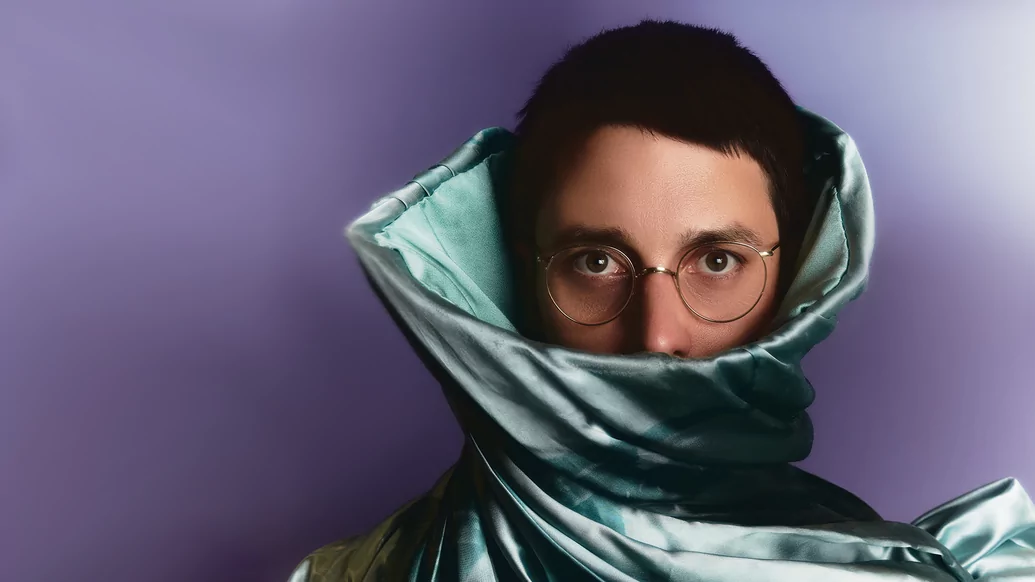
"It’s OK, being in a state of not knowing what's going to happen next and not knowing what the future might hold. It’s OK, if you can take strength in the here and now and in the ideas that you have and in the person that you are."
Another prominent instrument on ‘Eulo Cramps’ is the clarinet, which has appeared on every Call Super album to date courtesy of their father, the painter and Dixieland-style player, David Seaton. Their collaboration felt “instinctual early on”, and has become something of a welcome trademark in their music, in spite of those who might raise an eyebrow at it. “The formation of that thought in people's minds makes me want to go again and again and again,” they say. “It's an instrument as much as the kick drum that you heard on every record that you probably listened to this week. Just because it's not as common, doesn't mean it shouldn't be as vital to this musical thing that I'm exploring.”
These instruments return on the album’s stunning centrepiece, ‘Glossy Bingo Stain’, which Seaton describes as one of the tracks they’re most proud of, and as having lived inside them “in ways I haven't been able to express from a very young age”. Over six minutes, fragmented snatches of voice, woodwind and piano unfold into a syncopated, salsa-like beat. (You can read an essay that Seaton wrote on the evolution and influence of Cuban and Puerto Rican music in New York on their website). On top of this, the e-harp and clarinet dance and spin around one another with a lightness of step, in sweet, organic harmony.
The track’s title is a metaphor Seaton used for themself and their body, they say — the ‘Stain’ is a reference to their blood, ‘Glossy’ because, while they are alive, it flows. ‘Bingo’ refers to the fact that “being alive at all is the result of strange chance”. It alludes to the fact that, from quite a young age, Seaton bled periodically from a birthmark between their legs, which in turn led to intense spells of bullying at school and shame within. It triggered questions relating to gender, and how they viewed themself in the world, but ultimately, gave them the sense that who we are is not fixed, and that is fine.
“If you're an outsider of some description, you kind of identify as an outsider,” they explain. “If you're an inbetweener, you feel like you fall between categories of clearly defined people to some extent. I often felt, in my body, like an inbetweener, and then socially, like an outsider. It’s not like a ‘poor me’ thing, I think it's just that — in terms of how you form yourself — you have to take strength in the ideas you have, in the person that you become, and in the things you want to do. It forces you to have this self-belief, just as a survival mechanism, from quite a young age.
“It’s one of those things where, I may never be content with who I am, or I may never find out truly who I am, or I may just change all the time throughout my life... But it’s OK, being in a state of not knowing what's going to happen next and not knowing what the future might hold. It’s OK, if you can take strength in the here and now and in the ideas that you have and in the person that you are. And I think the people who kind of fall into the cracks in life a little bit, for one reason or another, have to figure that out a little bit harder than the people who are totally sure of who they are, or who have a clearer sense of those questions.”
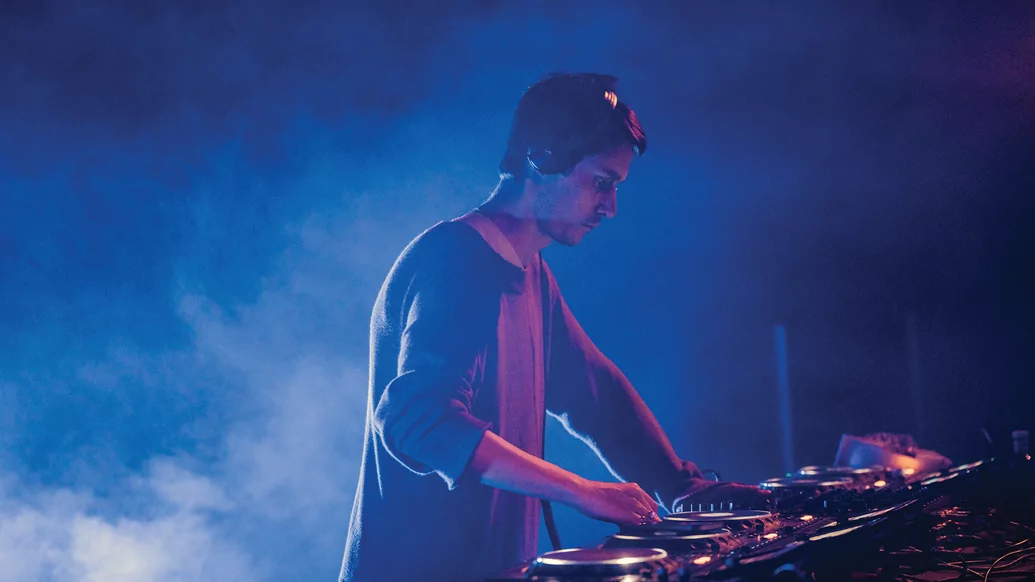
If ‘Glossy Bingo Stain’ signifies the blood of the living, ‘Coppertone Elegy’ is the dried blood of the dead. Drenched in distortion and featuring Seaton’s own murmured incantations, the track calls to mind ‘Mezzanine’-era Massive Attack and refers back to the idea that, throughout your life, you “kill off the worst versions of yourself that you come across”.
“If all of these tracks, and all of this project, are about these people who live inside you, or who you're yet to meet, or who you say goodbye to, then, the ones who are dead, you hope that they weren't the best version of you,” says Seaton. “You hope to identify the best version of you. If you are trying to live an existence of self-improvement in fits and starts, you want some agency over the people within you and the people you're living with or searching for.”
The track is intentionally the “worst produced” on the album; Seaton wanted it to “kind of sound like shit, but also have enough merit to go on the record”. “This is, I guess, a cliché, but perfection isn't beautiful,” they say. “The stuff in life which I connect to and resonate with is messy; it’s not always right, it's kind of all over the place, but it somehow hangs together. I think the music I’ve made in my albums is music that I’ve tried to find a way of doing that thing with. I hope this record treads that path between the tight and proficient, and the messy.”
The final track, ‘Years In The Hospital’, also features Seaton’s voice, this time singing softly over uncanny harp-guitar plucks and a rustling, fizzy sound collage until, suddenly, all music falls away and we hear a poem. Seaton, speaking quietly, as though through a broken toy microphone, reflects on the nature of loneliness and time spent alone, be that in a hospital, in transit, or in a pandemic. “Loneliness is a sad thing in many cases, but it's also kind of a necessary part of life,” they say, a self-confessed introvert. “I wanted to say something about that without being too judgmental... My heart goes out to anyone who is suffering loneliness, but, much like heartache and heartbreak, death and morbid stuff, it's also something you just have to go through in certain periods of life. Going through those experiences, hopefully, teaches you that there are more neutral positions, that you don't get to become someone who has more to give without going through those periods of pain and difficulty and sadness.”
The track feels like a companion piece of sorts to ‘Milkweed’, the final track on ‘Every Mouth Teeth Missing’, which stitches a poem through its beautiful dirge of piano, overdriven guitar and electronic sounds, which almost mimic those of a mechanical ventilator. “As awful as it was at the time, those years in the hospital actually gave me a lot of the very initial ideas of who I was,” Seaton says. “They've actually been a very rich thing to draw on... I sat with books and pens and bits of paper and drew for a long, long, long time, and kind of developed my sense of line... I feel like I got to find that person in me quite young, in the hospital.”
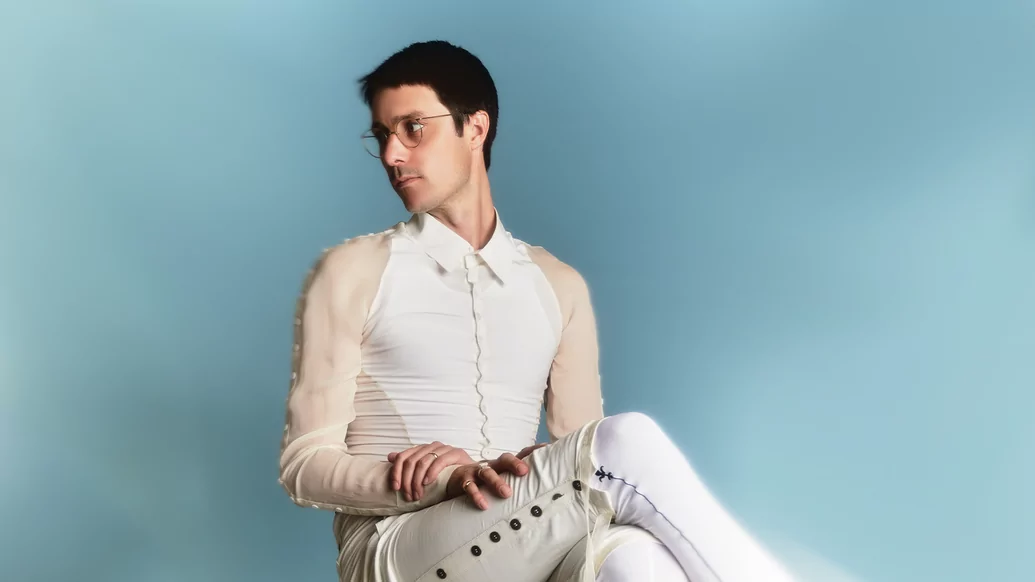
“The way I see it, a healthy scene is one that's rooted in a deeper diversity than just representational diversity. It's one that's rooted in people bringing their own ideas and influences and who they are as a human, things that aren’t just echoes of whatever's going on and what’s hot at that moment in time.”
Three other vocalists feature on ‘Eulo Cramps’. On ‘Illumina’, art pop artist Julia Holter lays gorgeous improvised melodies over frenetic drums and clarinet trills, with lyrics she has described as being informed by the way “electrons spin between energy levels and emit light”. On the bubbling ‘Sapling’, Eden Samara reconfigures words written by Seaton into a velvety melodic lead; “These are the branches between the spaces,” she sings. “These are the open doors.”
For the fluttering ‘Goldwood’, Seaton invited Elke Wardlaw, their studio neighbour in Berlin, to read a poem which ties the imagery of trees and light to the reckoning of the selves we must let go of, and the ways ideas emerge. They wanted the track, and the album overall, to be a “real slice of my life”, so asking Wardlaw to contribute felt natural. “It was a need to have some balance there,” they say, “to bring the idea of working with other people into a more personal place.”
Though the human voice has featured in Call Super’s music for years, it’s only relatively recently they’ve started working with them at the forefront of certain tracks. In December 2020, with Parris, they co-produced two club-tuned variations on a vocal from Manchester MC Fox: ‘Design of a Body Sublime’ and ‘Design of an Eye Sublime’.
Last year, they released ‘Swallow Me’, a buoyant stepper built around a looping vocal of their own own (“on the weather vane, on the weather vane...”), which gives way to a striking sample of Kamala Sankaram’s solo vocal performance from Resonant Bodies festival in New York in 2019. Her piece was informed by the Ancient Greek ololyga, a “ritual shriek of women, a sound so alarming to men that it could not be uttered within their earshot”.
As out-there as their albums may be, producing tracks for the dancefloor is still a crucial side of Call Super’s creativity; just recently, they released two fortified remixes of ‘Ilumina’ and ‘Sapling’ to play in the club. During the period in which they were processing the heavy themes explored in ‘Eulo Cramps’ and Tell Me I Didn’t Choose This, they simultaneously wrote the tracks that became the two ‘Cherry Drops’ EPs they released in 2021. Manifesting the same playful bliss as their ‘All We Have Is Speed’ / ‘All We Have Is Glue’ two-tracker for Shanti Celeste and Gramrcy’s Peach Discs, these tunes provided a sense of distraction and fun for Seaton, while retaining all the synapse-tickling complexity you’d expect from their work.
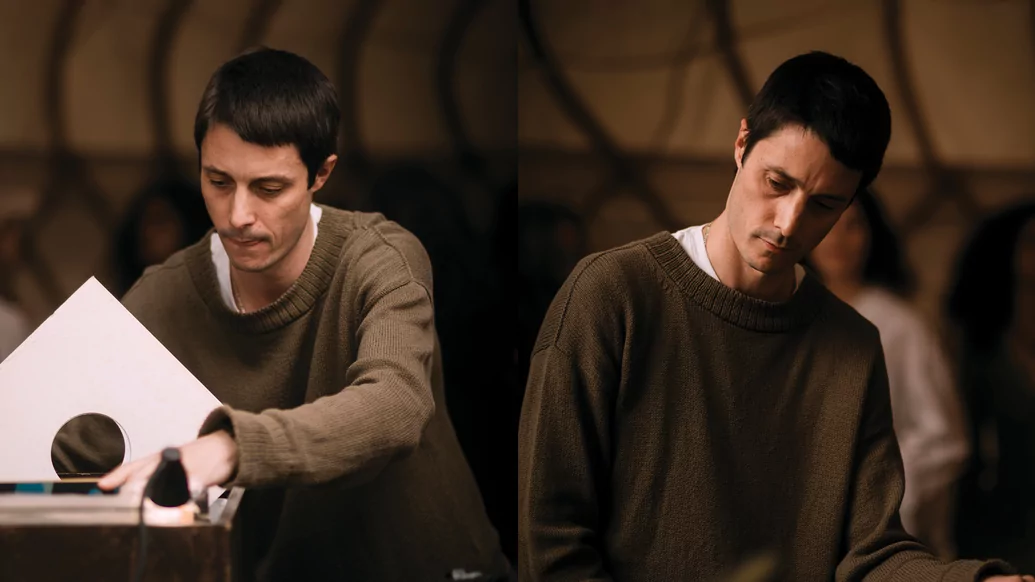
Seaton has always been careful to maintain a healthy sense of separation between their artistic output and their life as a DJ, and treats both with the utmost professionalism. Arriving home after a weekend of gigs, they’ll keep pretty strict “office hours” in the studio during the week, working on music or one of their other mediums, depending on the mood that takes them. That final part is key: they refuse to feel pressured into writing club bangers because their DJ career depends on it, they don’t want to have to play something because it’s expected of them. They have no interest in playing live, because that would mean having to write music specifically for that setting. They love DJing, they really love writing music, they’ve built a career out of being excellent at both individually, but the satisfaction they get from each of them is different — so why compromise one for the sake of the other? “It's just about trying to protect your relationship to things as best you can, because they're precious,” they say.
Earlier in the year, in Australia, they volunteered to do a DJ workshop through Resident Advisor for around 30 people. The night before, they found themselves wondering what it was that they were actually going to try to pass on to the people who attended. “I think I realised that the thing that's important about DJing is not any of the technical stuff, it's your experiences that you're drawing from. The more you have as a clubber and as a listener and in your relationship with music, then the more you have to share with people, because it's that connection that's like the nexus of what it authentically is to share music.”
They believe artists should be distillations of themselves. Looking at the global scene around them, it’s the artists, collectives and clubs upholding this sense of individuality they are inspired by — the pockets of people who defy trends, homogeneity and cheap hits, and instead build space for genuine diversity, innovation and exchange. It’s the kind of imprint that they too would like to leave behind.
“The way I see it, a healthy scene is one that's rooted in a deeper diversity than just representational diversity,” they say. “It's one that's rooted in people bringing their own ideas and influences and who they are as a human, things that aren’t just echoes of whatever's going on and what’s hot at that moment in time. That's the stuff that I get a lot of energy from, and my dream is to be that kind of artist. And if that's your dream, then I guess you hope, when you get to the end of an artistic career, that you leave that dream behind for someone else to agree with... Or supremely disagree with, and do their thing in their own way because of that! For me, that's what makes the creative world, that enriches life in a certain way, go round.”
Sat on a bench at the edge of the Heath, close to where we began, conversation turns to the future, something Seaton admits they only ever really think about in “neurotic terms”. They’re more content with living in the present, and at the moment, they’re finding joy in hearing incredible live music (shout out to Lana Del Rey), making art, and playing some of the best DJ sets of their career. After we say goodbye, they’re going to see some friends, before flying back to Berlin to prepare a bag of records for their vinyl-only slot at Houghton festival. Videos posted in the aftermath portray an artist in their element amongst the trees, in total sync with who they are in that moment, tearing the absolute roof off the place.


